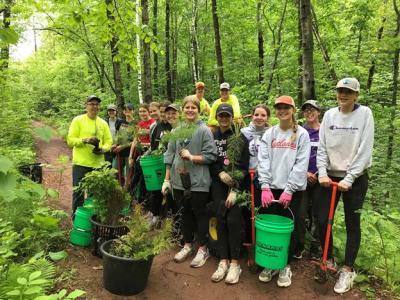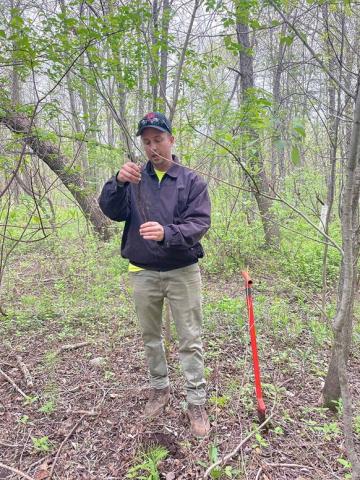More than 45,000 newly planted trees are providing important ecological benefits in Duluth, Minnesota, thanks to a $200,000 USDA Forest Service Eastern Region GLRI grant.
In all, the grant recipient and project coordinator Minnesota Land Trust oversaw the planting of over 27,000 trees and 1,750 shrubs during the first year of the project to improve resiliency in high-quality coastal forest habitat in the St. Louis River Natural Area within the City of Duluth. Much of the project area includes ash-dominated forests that are significantly threatened by emerald ash borer, a non-native invasive insect from Asia that is killing ash trees across North America. Project partners worked with Fond du Lac Band of Lake Superior Chippewa Tribal representatives prior to the project to select culturally appropriate replacement species for ash, and more than 20 native tree and shrub varieties were planted.
This project provides a variety of benefits including improved forest resilience; enhanced water quality and habitat for wildlife, particularly birds; climate adaptation for forests; and local workforce development. The new diverse selection of trees growing in the current understory serves to increase forest resilience by adding a variety of tree species not affected by emerald ash borer.
“The project is an outstanding example of managing resilient forests around urban areas for the benefit of water quality and the public,” said Ryan Toot, a watershed forester with the Eastern Region.
The project started in February 2022 and is scheduled to be completed in late September of this year.
Read the full story



